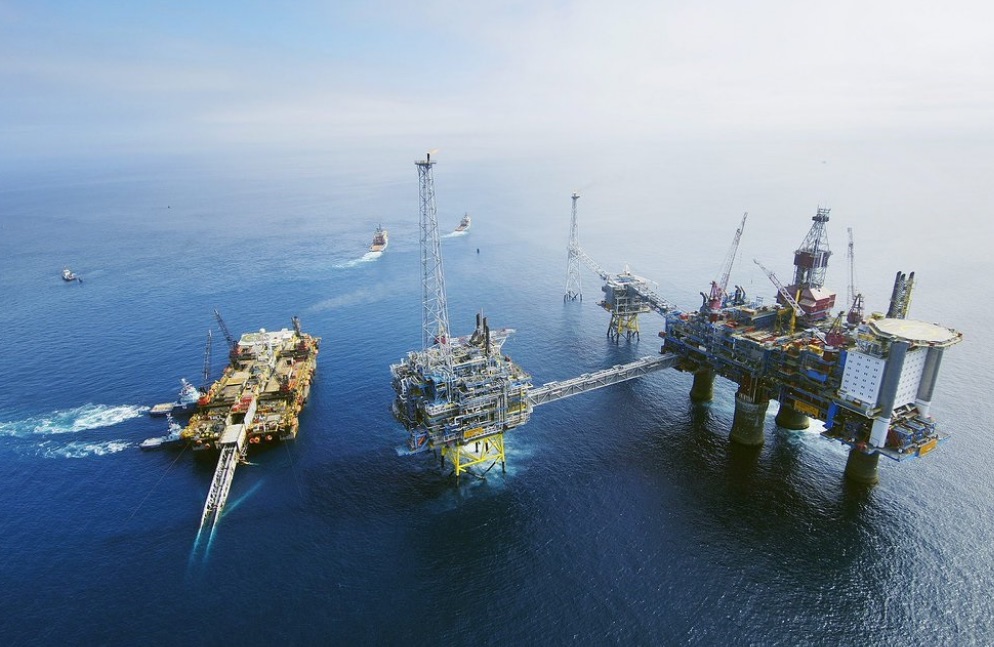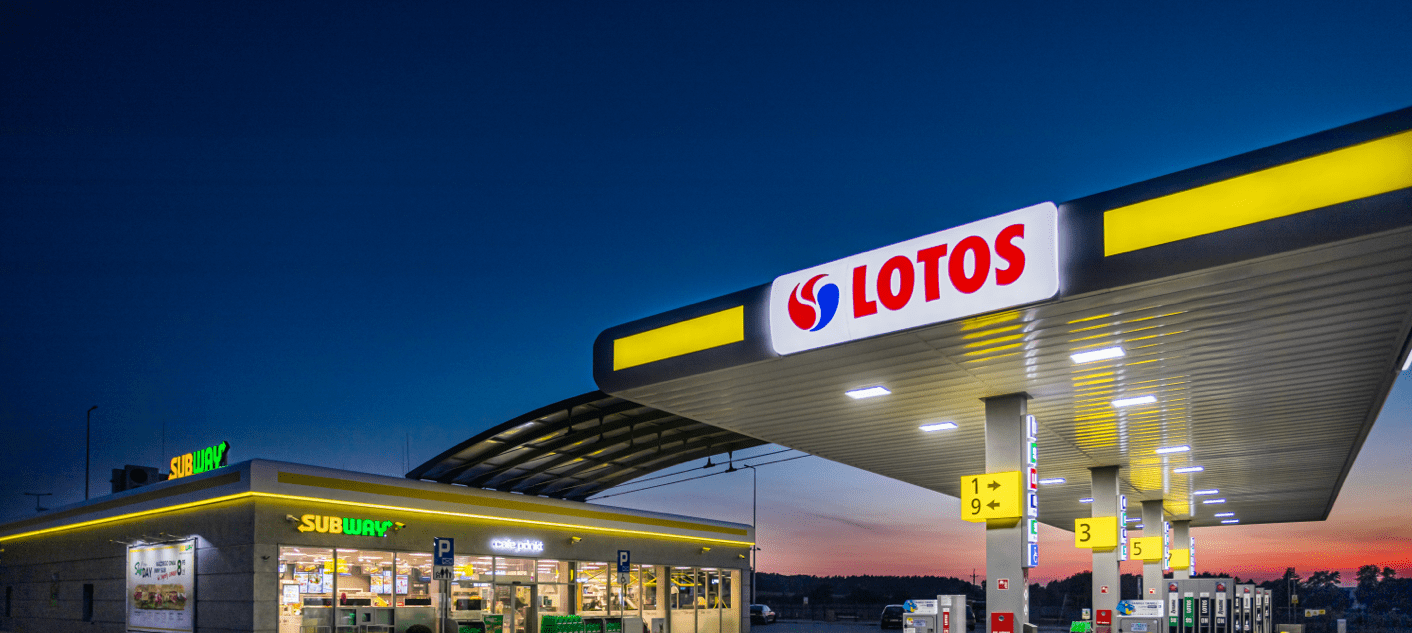Exploration and production activities in Norway

Exploration and production activities in Norway are carried out through subsidiary LOTOS Exploration & Production Norge AS (LOTOS Norge) of Stavanger.
At the end of 2020, LOTOS Norge held interests in 28 licences for exploration, appraisal and production of hydrocarbon reserves in the Norwegian Continental Shelf. Under a decision issued on January 19th 2021, LOTOS Norge was awarded interests in three new licences in Norway following the APA (Awards in Predefined Areas) 2020 licensing round: PL 1098 (50% interest), PL 1099 (30% interest) and PL 1091 (20% interest). The PL 1098 and PL 1099 licences are located within the area of the new NOAKA development project. The operator of PL 1098 is Sval Energi AS, which, like LOTOS Norge, holds a 50% interest in the licence. In the case of PL 1099, the operator will be AkerBP ASA (with a 40% interest) and the consortium will also include Lundin Energy Norway AS (with a 30% interest). The PL 1091 licence is located within Sleipner, currently the main producing area for gas and natural gas liquids in Norway. Under the licence, LOTOS Norge will be working jointly with Lundin Energy Norway AS the operator (40% interest) and with KUFPEC Norway AS (20% interest) and Petoro AS (20% interest) as partners. Following formal inclusion of the newly awarded licences, the LOTOS Group’s portfolio of Norwegian assets will comprise 31 licences.
In 2020, the LOTOS Group’s average daily hydrocarbon output in Norway was 14.4 thousand boe/d (-6.6% year on year), which accounted for 71% of its total production volume. It produced natural gas and condensate from fields located in the Heimdal and Sleipner areas (including the Utgard field brought on stream in the third quarter of 2019). As at the end of 2020, the LOTOS Group’s 2P hydrocarbon reserves in Norway totalled 26.3 million boe (including 16.5 million boe of crude oil and 9.8 million boe of natural gas), which accounted for 35% of the Group’s total 2P reserves.
Competition for the upstream business

In 2020, exploration and production activity on the Norwegian Continental Shelf remained busy despite the ongoing COVID-19 pandemic and crisis affecting the petroleum commodity market. 2020 saw an increase in both hydrocarbon production levels and new field development investment relative to 2019. The following key statistics provide a picture of the market environment in Norway(1):
-
NOK 155 billionworth of completed investment projects (excluding exploration) (+ 2% year on year),
-
3.89 million boe/dayof average hydrocarbon production (up 6% year on year),
-
14new discoveries,
-
4new fields brought on stream (Tor, Skogul, Ærfugl and Dvalin),
-
31exploration wells drilled.
(1)Source: Norwegian Shelf statistics based on publications and data from the Norwegian Petroleum Directorate.
→https://www.npd.no/en/facts/publications/reports2/the-shelf/the-shelf-in-2020/
As at the end of 2020, a record-high number of fields (90) were under production.
In 2020, the daily hydrocarbon production in Norway averaged 3.89 million boe/d (up 6% year on year). Accounting for half of that production volume were liquid fractions, i.e. crude oil, condensate and NGL (natural gas liquids). According to the Norwegian Petroleum Directorate, production should rise incrementally until 2025, with the average level of hydrocarbon production expected to stabilise at approximately 4.0-4.4 thousand boe/day. Importantly, another forecast trend is towards optimised field operation costs and lower greenhouse gas emissions, which, with production volumes on the rise, should translate into improved efficiency and profitability of upstream projects.
Historical and planned hydrocarbon production levels on the Norwegian Continental Shelf (million boe/day)
Source: In-house analysis based on publications and data from the Norwegian Petroleum Directorate.
→ https://www.npd.no/en/facts/publications/reports2/the-shelf/the-shelf-in-2020/
The Norwegian Continental Shelf still offers attractive growth and value addition potential for exploration and production companies. According to data from the Norwegian Petroleum Directorate, a governmental authority, out of Norway’s total oil and gas resources estimated at approximately 15.7 billion cubic metres, about a half are still potentially producible, including the remaining recoverable reserves of producing fields or fields under development (approximately 18% of the total), contingent resources of new discoveries (approximately 9%), as well as prospective resources identified within exploration areas (approximately 25%). In the coming years, the level of investment in the development of new fields is expected to remain broadly stable, supported by new tax credits introduced by Norway in 2019.
Potential resources of the Norwegian Continental Shelf
Source: In-house analysis based on publications and data from the Norwegian Petroleum Directorate.
→ https://www.npd.no/en/facts/publications/reports2/the-shelf/the-shelf-in-2020/
The competitive environment in Norway is changing, with the key trends of recent years including very active consolidation of assets and businesses, increased market activity of players supported by private equity funds, as well as continued divestment of production asset portfolios in the North Sea by international majors, with a resulting reduction of their market shares.
As at the end of 2020, a total of 37 companies were involved in exploration and production operations in Norway. Over the past decade, the number of active market players, has declined on account of the ongoing consolidation processes (from the record-high number of 56 companies active in 2013). Equinor remains the leader on the Norwegian Shelf, accounting for approximately 70% of the shelf’s aggregate oil and gas output. A prominent group of industry investors, which have expanded their market shares in recent years, are middle-sized companies, such as AkerBP, LOTOS E&P Norge, Lundin, MOL, Neptun, OMV, Vår Energi and Winterare DEA. Another group of investors are small companies, including OKEA, Pandion, Sval Energy, Wellesley and utilities such as Edison and PGNiG. International majors are also active in Norway, although their market shares have lately been reduced. LOTOS E&P Norge, with a current daily production volume of some 14.4 thousand boe/d and 2P reserves of approximately 26 million boe, holds a 0.4% share in the market.
Categories of upstream investors active in Norway.
| 2020 | 2019 | |
|---|---|---|
| Large Norwegian companies (Equinor, Petoro) | 2 | 2 |
| International majors (ConocoPhillips, Shell, Total) | 3 | 3 |
| Medium-sized companies (e.g. AkerBP, LOTOS, Lundin, MOL, Vår Energi) | 19 | 20 |
| Small companies (e.g. OKEA, Pandion, Sval Energy, Wellesley) | 11 | 12 |
| Utilities (Edison, PGNiG) | 2 | 2 |
| Total number of companies | 37 | 39 |
Source: In-house analysis based on publications and data from the Norwegian Petroleum Directorate.→https://www.npd.no/en/facts/publications/reports2/the-shelf/the-shelf-in-2020/
Highly prospective in terms of resources and still offering considerable potential for new oil and gas discoveries, the Norwegian Continental Shelf remains an attractive area of activity for companies in the upstream industry, given the prevailing positive trends in cost reduction, efficiency improvement and technology advancement, the active trading market as well as the stable fiscal and regulatory environment.
Key assets of the LOTOS Group (production levels and licences)
In addition to its interests in the fields, LOTOS Norge also holds interests (of 5% and 15%, respectively) in the Heimdal and Sleipner area gas hubs, i.e. the gas and condensate processing and transporting centres of strategic importance to gas export from Norway to Central Europe and the United Kingdom.
Logistics
LOTOS Norge holds interests in licences covering the production infrastructure in the Heimdal and Sleipner fields, including: the Heimdal gas and condensate processing and transport hub (operated by Equinor, LOTOS Norge holds a 5% interest), and the Sleipner gas and condensate processing and transport hub (operated by Equinor, LOTOS Norge holds a 15% interest).
Gas produced from the Heimdal and the Sleipner fields is injected into the Gassled pipeline system, and then delivered to off-take points in the UK and continental Europe (the Netherlands, Germany).
Condensate from the Heimdal field is injected into the Forties Pipeline System (FPS), and then delivered to an off-take point at the Kinneil Terminal/Hound Point in Scotland, where it is processed into final products, i.e. Forties Blend crude oil and gas fractions. Condensate from the Sleipner field is transported via a pipeline to an off-take point in Karsto (Norway), where it is processed into final products, i.e. Gudrun Blend light crude and liquid fractions (NGL).

